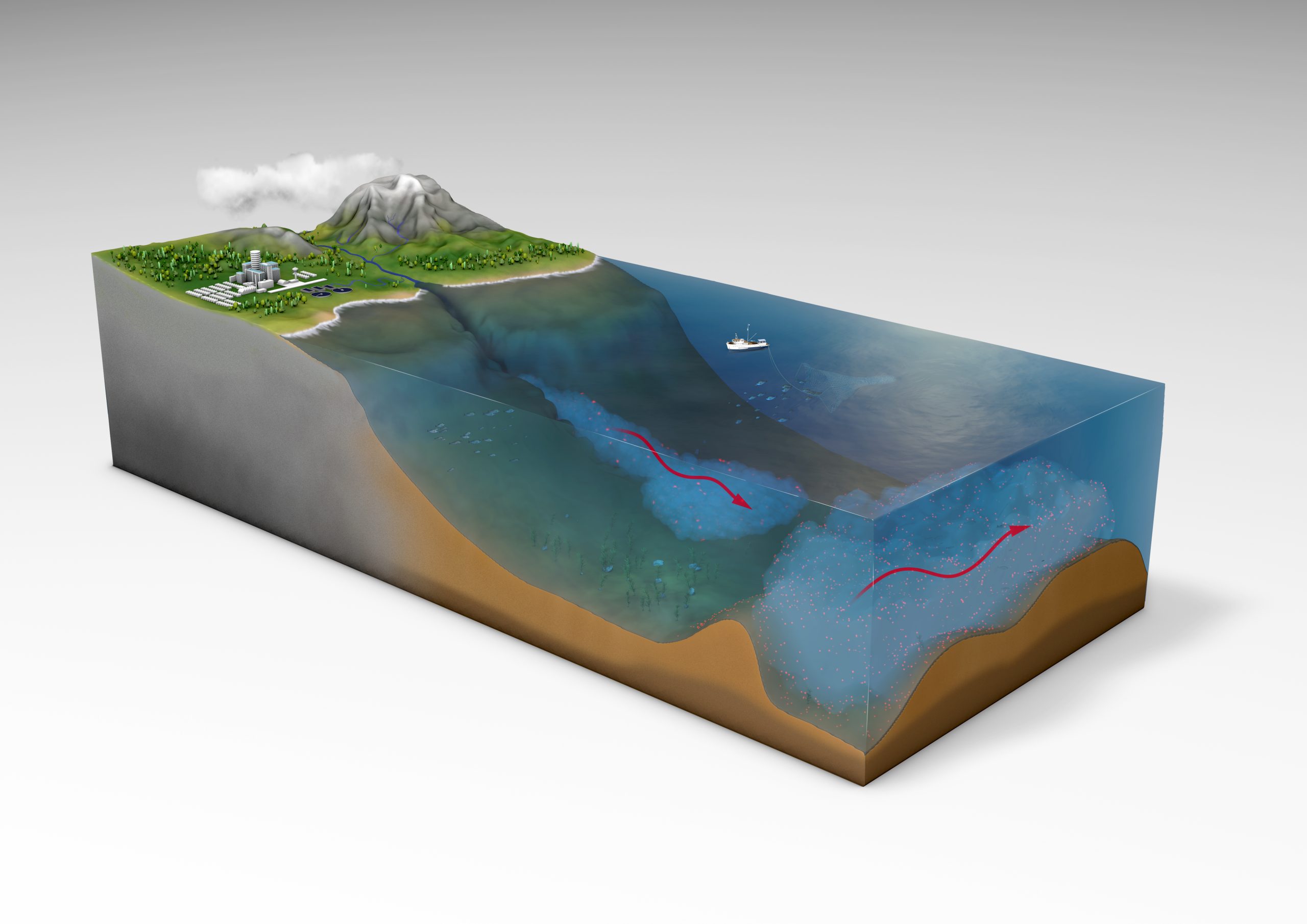Every year, millions of tonnes of plastic enter the oceans. If they’re buoyant, they get swept by surface currents into massive “garbage patches” like the famous ones in the North Pacific Ocean. But the tiny fragments and fibers of microplastics are harder to trace. As researchers have built up more evidence of their distribution, it’s becoming clearer that they may have a tendency to accumulate in particularly unfortunate places, like the surface currents where prey is plentiful and juvenile fish do a lot of feeding.
A paper in Science today reports a new hotspot: regions of the seafloor where sediments, swept along by deep currents, accumulate. Those same currents transport oxygen and nutrients to deep-sea ecosystems, meaning that the microplastics are probably accumulating in some of the most biodiverse spots of the seafloor.
Buried plastic
Much like weather on land, ocean currents are a morass of complex, interconnected systems, affected by local physical features. This makes it difficult to understand where plastics might end up. But we do know there's a lot to track. Right now, only around one percent of the plastic in the oceans seems to accumulate on the surface; much of the rest probably settles in the depths.
To start filling in some of the outlines of plastic distribution, geologist Ian Kane and his colleagues sampled sediments in the Tyrrhenian Sea, which makes up part of the Mediterranean. They chose this region because its sea floor and currents are well-studied, making it easier to understand why plastics might be accumulating in certain areas. Plastics come to the sea by a variety of routes. Some are washed into the sea by rivers that pass through human settlements, and yet more plastic comes from fishing and shipping.
The researchers took samples of the sediment from different places in the study area and counted up the microplastic fragments and filaments that were buried in them. Contamination is a huge problem for microplastic studies because people wearing synthetic fibers could shed some of that material into a sample, making its microplastic content look higher than it is. So the researchers made sure to wear clothing made from natural fibers—like cotton—throughout the whole process. They also processed “blank” samples that should have been microplastic-free unless they were contaminated by the experimenters.
“Microplastics are readily identified by the eye,” the researchers write: their bright colors make them easy to spot. But to be sure, they followed up with the “hot needle test,” which is exactly what it sounds like—plastics curl up when poked with a hot needle, while natural substances don’t.
They found 957 microplastic particles across the sixteen sediment samples, with as many as 191 pieces in just 50g of sediment. That’s the highest concentration measured so far in any deep-sea setting, and it doesn't even include plastics that had degraded beyond the point where they could be identified. There was a low level of contamination in the blank samples—two fibers—as well as some cotton fibers that probably also came from the experimenters, but that’s not enough to suggest a contamination problem.
The deep ocean garbage patch
The distribution of the plastics in the different sediments told a story about where plastics are ending up. Distance from the shore made no difference to the microplastic count, suggesting that it’s not a simple matter of plastics drifting directly downward to the ocean floor. Rather, they were being moved along by the same currents that transport sediment and landing along with the sediment in mounds called contourite drifts.
Those currents also move oxygen into the depths of the ocean, as well as nutrients, allowing ecosystems to spring up where they can be nourished by the necessities the currents bring. So these biodiversity hotspots are likely to overlap with the microplastic hotspots created by currents deep in the ocean, adding to concerns about how microplastic pollution might affect ocean ecosystems and food webs.
These findings are obviously specific to the region that the researchers focused on. But the point of the work isn't to come up with an estimate that applies across the huge complexity of the world's oceans. Rather, it's to shine a light on a new source of complexity that needs to be properly considered and built into our growing picture of where our plastics end up.
There are plenty of efforts underway to stop the ongoing torrent of plastic into the oceans, write Kane and his colleagues. But these can’t do much about the garbage that’s already there, they point out: “Our oceans will continue to be impacted by the legacy of past waste mismanagement.”
Science, 2020. DOI: 10.1126/science.aba5899 (About DOIs).


